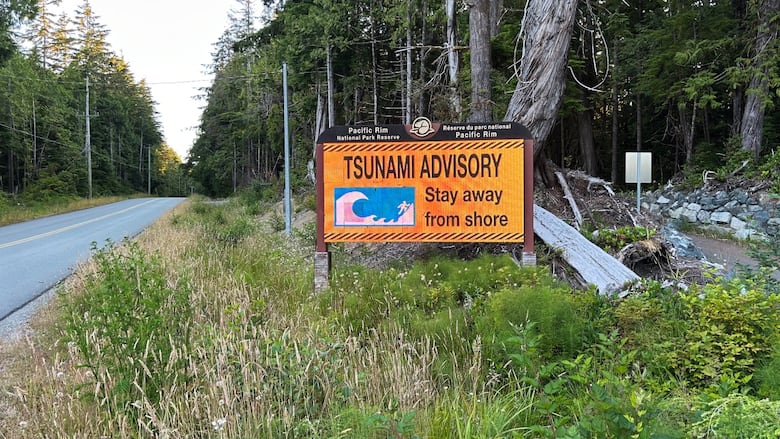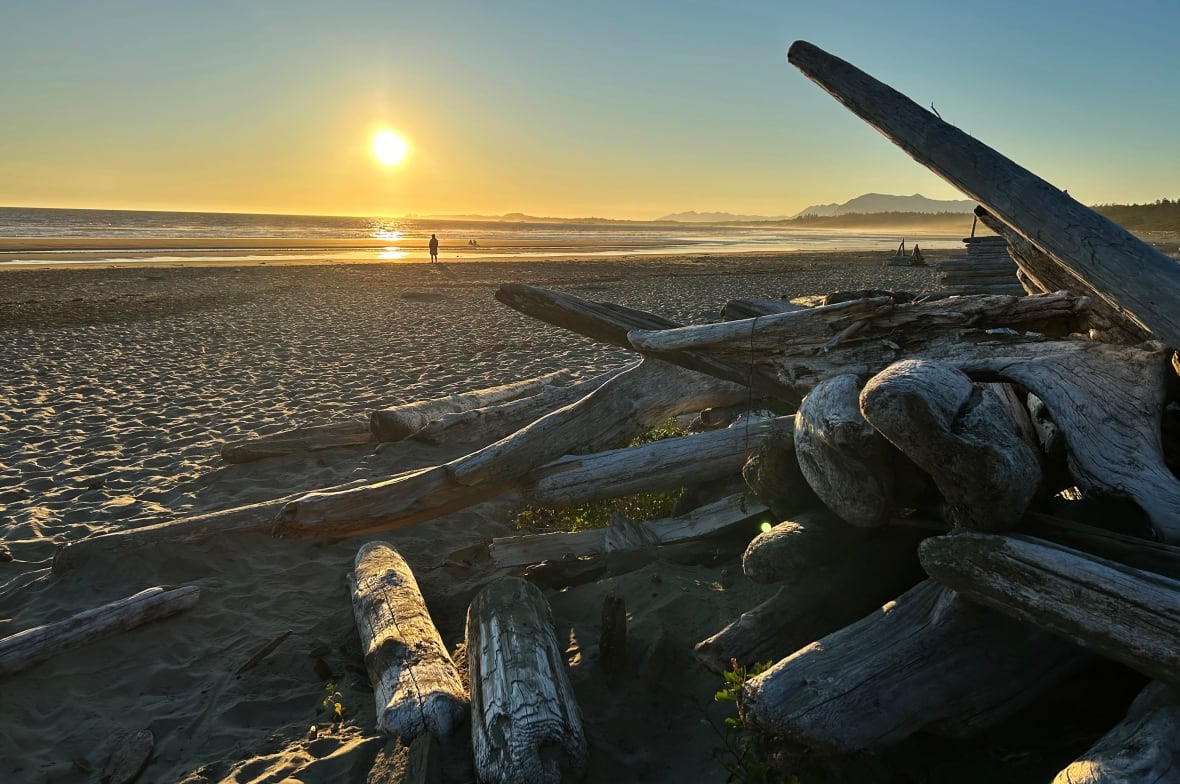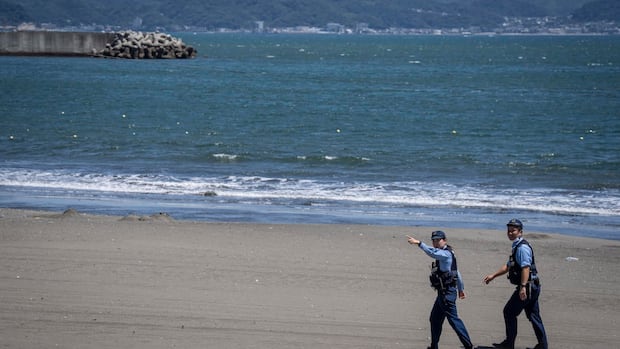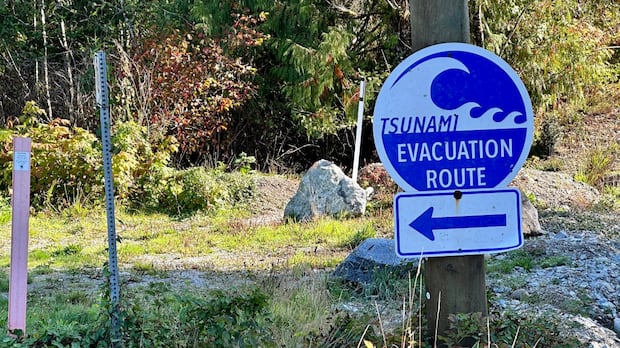'Don't see it coming:' minister pushes for preparedness after B.C. tsunami scare
Highest waves recorded in B.C. were around Winter Harbour, at 27 centimetres, U.S. officials say

British Columbia had the luxury of time as emergency officials watched a potential tsunami roll across the Pacific Ocean after a massive earthquake near Russia.
But the province's emergency management minister says it's a reminder that B.C. has to always be prepared for the possibility of a quake closer to home.
Kelly Greene said B.C.'s response to Tuesday's tsunami advisory triggered by an 8.8 magnitude earthquake off the coast of Russia "met the moment" given the risk facing the coast.
"We don't know when a big earthquake is going to come. We don't know when a big tsunami event would come," she said.
"So, … being ready is incredibly important, because you don't see it coming, there is no notice. So, without that preparation, you could be in very bad shape indeed."
The province cancelled a tsunami advisory on Wednesday that was issued after the underwater quake, which was one of the strongest ever recorded and set off tsunami alerts and warnings around the Pacific.
The advisory initially said tsunami waves of less than 30 centimetres were expected to hit Tofino, B.C., around 11:30 p.m. PT Tuesday. The earthquake was given a preliminary magnitude of 8.8.
Overnight, the U.S. National Oceanic and Atmospheric Administration (NOAA) said the waves were highest in B.C. at Winter Harbour on northern Vancouver Island, at 27 centimetres.
An update on Wednesday said the waves were 22 centimetres in Tofino.
The Ministry of Emergency Management and Climate Readiness issued a bulletin Wednesday morning saying the province was standing down its operations centre.
"No zones of coastal British Columbia are at risk. Repeat, no zones of coastal British Columbia are at risk," the 6:25 a.m. PT bulletin read.
John Cassidy, an earthquake seismologist with Natural Resources Canada, said in an interview Wednesday that there are valuable lessons to be learned from the emergency, related to both the response and the science.
"We have the same type of earthquakes off the coast of Vancouver Island, Washington, Oregon, and off of Haida Gwaii as well. So, we'll be looking at data from this earthquake that will tell us something about how the sea floor moved and how that is related to tsunami generation," he said, referring to how an ocean plate is pushed below another.
"Others will be looking at this, whether you're a tsunami modeller or involved in emergency management, [looking at] the best way to get the information out to individuals along the coast. So, lots to learn."
Cassidy said instruments around the region, including Canada, would have given experts a sense of the magnitude and location of the earthquake within minutes, as well as an early indication of tsunami potential.
He said tsunami waves in the open ocean travel at about the same speed as a commercial airliner.
Buoys in the ocean detect how much of a wave is passing overhead, which allows NOAA to issue information to provinces and local governments, he said.
Premier David Eby called the response a "trial run" in which B.C. fortunately did not experience a huge impact — though an expert told him it was a possibility.
Eby said during an unrelated news conference on Wednesday that he initially had to "overcome that feeling that people were overreacting a little bit" when he heard of the quake "halfway around the world," but experts briefed him on "just how unpredictable" these events can be.
He said he knows the province is "prepared for a more significant impact if it happens."
People urged to move away from coast
While the advisory was in place, British Columbians were being urged to stay away from the coast.
The District of Tofino had closed beaches, and the province's emergency information agency warned of strong waves and currents.
The quake struck just before 4:25 p.m. PT on Tuesday, about 119 kilometres east-southeast of Petropavlovsk-Kamchatsky, a city of about 180,000 residents in Russia's Kamchatka region.
The preliminary magnitude of 8.8 would make it the world's strongest quake since 2011, and one of the 10 most powerful recorded since 1900, according to the U.S. Geological Survey.
Signs alerting people about the now-cancelled tsunami advisory had been posted at Wickaninnish Beach in Pacific Rim National Park, southeast of Tofino, but people continued to take in Tuesday's sunset, although the parking lot was mostly empty.

Campers at the JX Surf Shop campground between Tofino and Ucluelet on Vancouver Island were glued to their phones Tuesday night searching for news about the tsunami, but most campers appeared to be staying put.
Beyond B.C., the quake sent tsunami waves into Japan, Hawaii and the U.S. West Coast.
Several people were injured, but none gravely, and no major damage has been reported so far.
Authorities warned the risk from the quake could last for hours, and millions of people potentially in the path of the waves were initially told to move away from the shore or seek high ground.
The worst appeared to have passed for many areas, including the U.S., Japan and the affected parts of Russia. But Chile raised its tsunami warning to the highest level for most of its lengthy Pacific coast and said it was evacuating hundreds of people.
In the immediate aftermath of the quake off Russia's Kamchatka peninsula, residents fled inland as ports flooded, and several were injured while rushing to leave buildings.
Corrections
- A previous version of this story incorrectly stated that the highest tsunami waves in B.C. were recorded on Langara Island. In fact, they were recorded at Winter Harbour on Vancouver Island.Jul 30, 2025 8:58 PM EDT
With files by Dirk Meissner in Wickaninnish Beach, and The Associated Press




